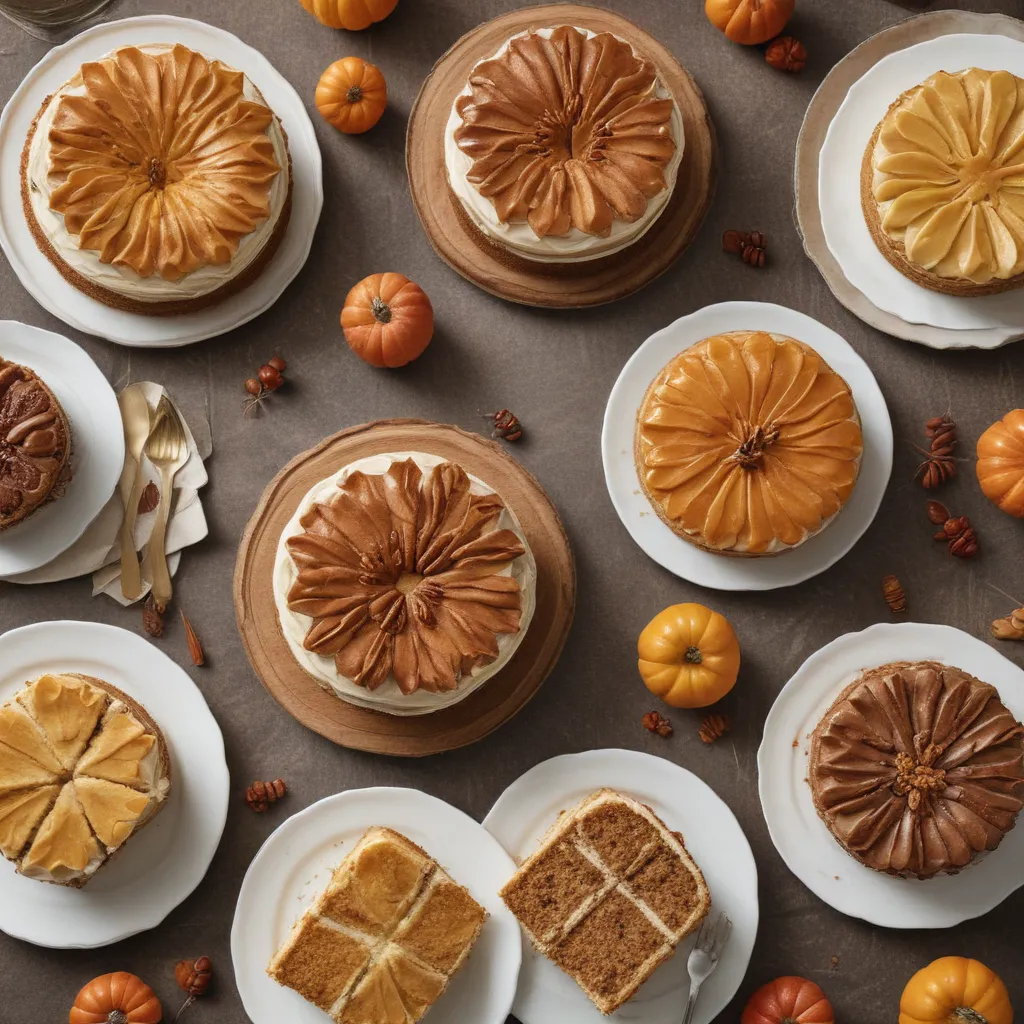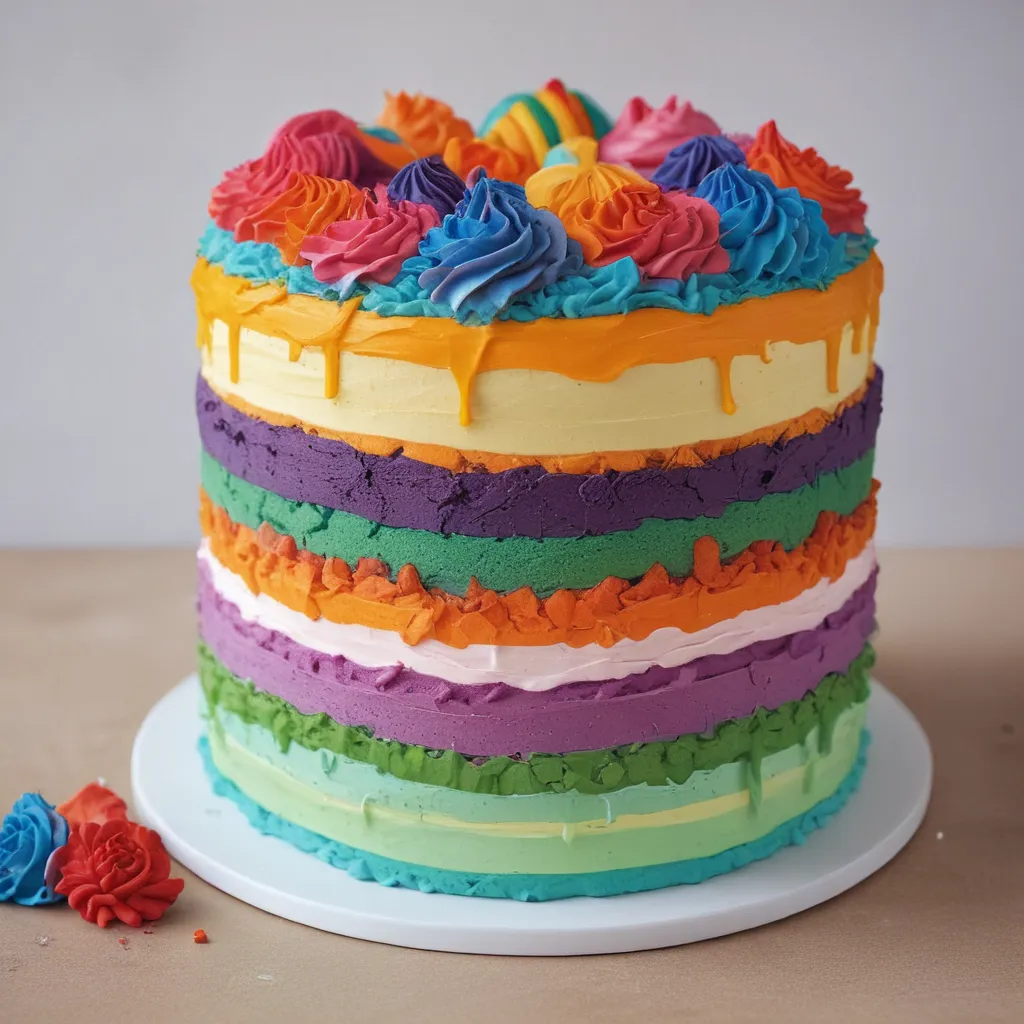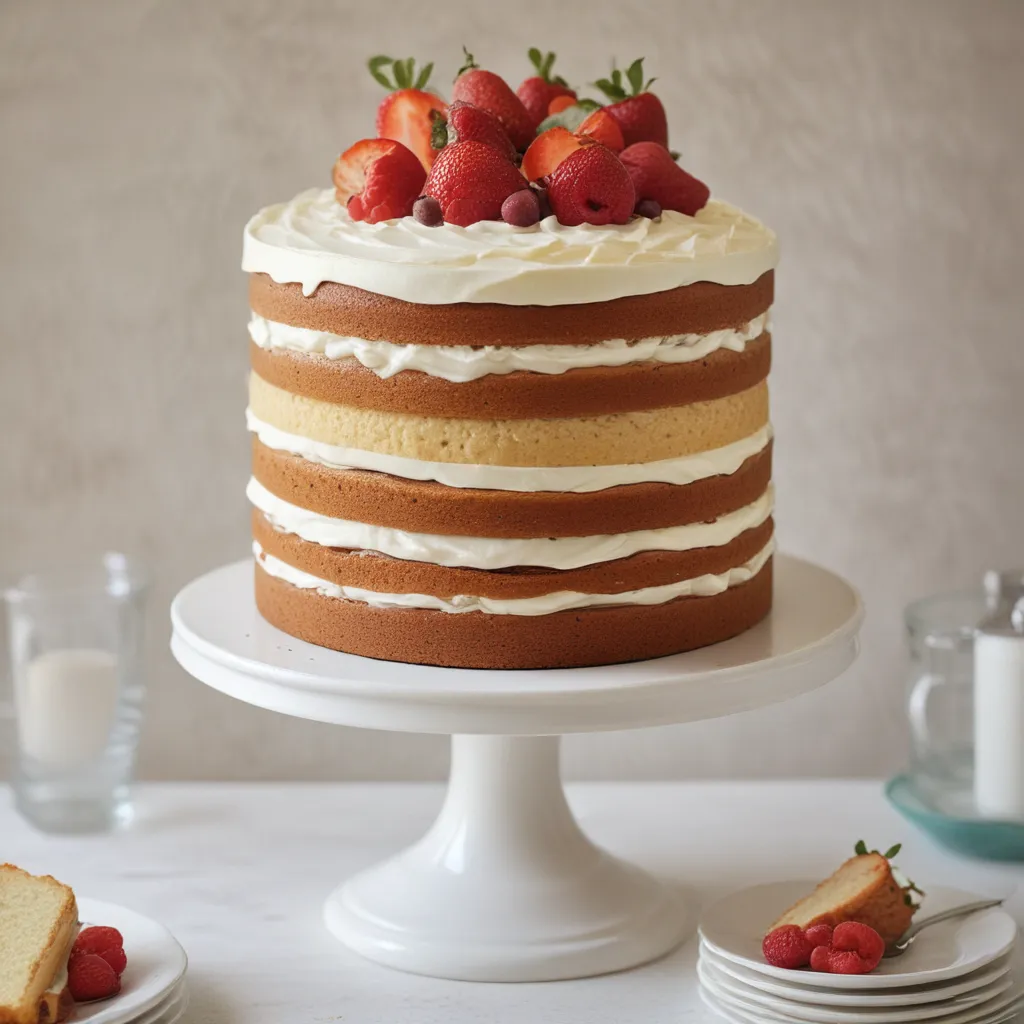Ah, the elusive quest for the perfect texture in baked goods – it’s the holy grail that every passionate baker like myself aspires to achieve. Whether you’re whipping up a decadent chocolate cake, flaky homemade croissants, or chewy gooey cookies, the texture is what truly sets your creations apart.
But let’s be real, nailing that textural sweet spot can be tricky. One day your cakes are light and fluffy, the next they’re as dense as a brick. Your cookies might be crisp on the outside but more resembling rubber on the inside. And don’t even get me started on the dreaded sogginess that can plague homemade bread.
Well, fear not my fellow bakers, because I’m here to demystify the science behind texture and share my hard-earned tips and tricks for consistently achieving the perfect crumb, chew, and mouthfeel in all your baked goods. So preheat your ovens, grab your mixing bowls, and let’s dive in!
The Importance of Texture in Baking
You know, texture isn’t just some arbitrary attribute in baking – it’s absolutely integral to the overall experience. Think about it, would a dense, leaden chocolate cake really be as decadent and satisfying as one that’s light, airy, and practically melts on your tongue? Would chewy, gooey cookies be nearly as delectable if they were crisp and cracker-like throughout?
Texture is what gives baked goods their unique character and appeal. It’s what makes them feel indulgent, comforting, and irresistible. And it’s not just about the sensory experience either – texture also plays a crucial role in the structural integrity of your baked goods. A well-developed gluten network, for instance, is what gives bread its signature chew and allows it to maintain its shape.
So you see, texture isn’t just an afterthought or a nice-to-have – it’s an essential component that can truly make or break your baked creations. And trust me, once you start dialing it in, your family and friends are going to be clamoring for more. They’ll be raving about the sublime texture of your muffins, the perfect crumb of your cakes, and the addictive chewiness of your cookies. Heck, they might even start begging you to open up your own custom cake shop (shameless plug for my shop, Jax Cake Shop!).
Understanding the Science of Texture
Alright, now that we’ve established the importance of texture, let’s dive into the nitty-gritty of how it all works. Because in order to truly master and manipulate texture, we need to understand the fundamental science behind it.
At its core, the texture of baked goods is all about the interactions between the various ingredients and the way they behave during the baking process. Things like gluten development, fat content, moisture levels, and the creation of air pockets all play a crucial role in determining the final texture.
Let’s take a closer look at a few of the key players:
Gluten Development
Gluten, the network of proteins found in wheat flour, is perhaps the single most important factor when it comes to texture. The way the gluten strands develop and interact with each other during mixing and kneading is what gives breads, pastries, and cakes their structure and signature chew.
Underwork the gluten, and you’ll end up with a crumbly, tender texture. Overwork it, and you’ll get a tough, dense result. The key is to find that perfect balance, which often comes down to the mixing method, kneading time, and hydration level of your dough or batter.
Fat Content
The amount and type of fat in your recipe also have a major impact on texture. Fats like butter, oil, and shortening act as tenderizers, interfering with gluten development and creating a more tender, tender crumb. They also help create flakiness in items like pie crusts and biscuits.
On the flip side, reduced-fat recipes often struggle with dryness and toughness. So it’s all about finding the right fat-to-flour ratio to get the texture you’re after.
Moisture Content
Moisture is another crucial factor, as it’s what gives baked goods their soft, moist, and pliable texture. Too much moisture can lead to gumminess or even sogginess, while too little results in dryness and crumbliness.
Striking the right balance of moisture often comes down to precise ingredient measurements, proper mixing, and even environmental factors like humidity. Paying close attention to your recipe’s hydration levels and making adjustments as needed is key.
Air Incorporation
Finally, the amount of air that gets incorporated into your batter or dough plays a big role in texture as well. Things like whipping egg whites, creaming butter and sugar, and kneading dough all help introduce air pockets that expand during baking, creating that lovely, light, and airy crumb.
Underfold or undermix, and you’ll end up with a dense, heavy result. Overmix, and you risk toughening up the gluten and losing all that precious airiness. It’s all about finding that Goldilocks zone.
So in summary, texture in baking is the delicate interplay of gluten development, fat content, moisture levels, and air incorporation. Mastering these elements is the key to consistently achieving the perfect mouthfeel in all your creations.
Techniques for Improving Texture
Now that we’ve covered the science behind texture, let’s dive into some practical techniques you can use to take your baked goods to the next level. Whether you’re battling dense cakes, tough cookies, or soggy breads, these tips and tricks will have you texturally on point in no time.
Proper Mixing & Kneading
As I mentioned, the way you mix and knead your dough or batter is crucial for developing the right texture. For cakes and quick breads, you’ll want to be gentle and avoid overmixing, which can lead to a tough, dry crumb.
With yeast breads, on the other hand, you’ll need to knead the dough thoroughly to build up that all-important gluten network. But even then, you have to be careful not to overwork it, or you’ll end up with a dense, chewy loaf.
The key is to pay close attention to your recipe’s instructions and visual/textural cues. When the dough or batter reaches the right consistency – smooth, elastic, and just slightly tacky – you’ll know you’ve nailed the mixing and kneading.
Temperature Control
Temperature plays a huge role in texture as well. For example, chilling your cookie dough before baking can help create that perfect balance of crispy edges and chewy centers. Warming up your butter to the right softness before creaming it can ensure your cakes bake up light and fluffy.
And with yeast breads, the fermentation and proofing temperatures are critical for gluten development and rise. Too cold, and your dough won’t proof properly. Too hot, and you risk killing the yeast.
So be sure to follow recipe guidelines when it comes to ingredient temperatures, and don’t be afraid to make adjustments based on your kitchen climate. A little trial and error will help you dial in the perfect texture-boosting temperatures.
Ingredient Substitutions
Sometimes, a simple ingredient swap can make all the difference in terms of texture. For example, replacing some of the all-purpose flour in your recipe with bread flour can give your baked goods a chewier, more structured crumb.
Or you could try swapping out butter for oil in your cookies to achieve a more tender, cake-like texture. Using cake flour instead of all-purpose can also result in a finer, more delicate crumb in cakes and quick breads.
The key is to experiment and find the right balance of ingredients that gives you the textural profile you’re after. Don’t be afraid to tweak recipes and test out different substitutions – that’s how you’ll discover your signature textures.
Proper Baking Techniques
Last but not least, the way you actually bake your goods can have a huge impact on their final texture. Things like oven temperature, baking time, and even pan choice can make or break your results.
For instance, baking at too high a temperature can lead to overbrowning and a tough, dry exterior. But underbaking can result in a gummy, undercooked interior. Finding that Goldilocks zone of temperature and time is key.
The type of pan you use matters too. A dark, nonstick pan will absorb more heat and potentially lead to excess browning on the bottom of your baked goods. Opting for a lighter-colored pan or lining it with parchment paper can help prevent this.
And don’t forget to pay attention to signs of doneness, like the bounce-back of the center or the golden-brown color. Pulling your baked goods at the right moment is crucial for nailing that perfect texture every time.
Texture Transformations: Real-Life Examples
Okay, so we’ve covered the science and techniques – but let’s bring it all to life with some real-world examples, shall we? I’ve got a few case studies up my sleeve that I think you’re really going to enjoy.
The Case of the Cakey Cookies
A while back, one of my customers, let’s call her Jane, came to me completely frustrated with her cookies. No matter what recipe she tried, they always turned out cakey and dense, rather than the chewy, crisp-edged treats she was aiming for.
After a little Q&A, we discovered that the culprit was likely her mixing technique. Jane was over-creaming the butter and sugar, which was incorporating too much air into the dough and resulting in that cake-like texture.
So I walked her through the proper method – gently mixing the butter and sugar until just combined, rather than whipping them to a light and fluffy consistency. I also recommended chilling the dough before baking to help develop those crisp edges.
Lo and behold, Jane’s next batch of cookies was a textural triumph! Crisp on the outside, delightfully chewy on the inside – the perfect balance she’d been searching for. She was thrilled, and now she’s one of my most loyal customers at Jax Cake Shop.
The Saga of the Soggy Bread
Then there was the case of my friend Alex, who just couldn’t seem to nail the texture of his homemade bread. No matter how carefully he followed the recipe, his loaves would always end up heavy, dense, and – worst of all – downright soggy.
After a little investigation, we determined that the culprit was likely his proofing technique. Alex was letting the dough rise for way too long, which was causing the gluten structure to break down and the moisture levels to get out of whack.
So I recommended he shorten the first rise, as well as the final proof before baking. I also suggested experimenting with different flours – maybe swapping out some of the all-purpose for bread flour to help strengthen the gluten.
Sure enough, Alex’s next loaf was a textural revelation – a perfect, light, and airy crumb with just the right amount of chew. He was honestly shocked at the transformation, and now he’s a total bread-baking connoisseur. He even talks about opening up his own little bakery someday!
The Curious Case of the Dry Cakes
And then there was the time my cousin Sarah came to me in a panic about her cakes. No matter what recipe she tried, they always turned out dry, dense, and downright unappetizing. She was at her wit’s end, convinced she simply couldn’t bake a decent cake to save her life.
After tasting one of her creations, I quickly zeroed in on the issue: over-mixing. Sarah was so determined to get a smooth, even batter that she was essentially overworking the gluten, resulting in a tough, dry crumb.
So I walked her through the proper cake-mixing technique – gently folding the ingredients together rather than using an electric mixer. I also recommended she measure her ingredients more precisely, as even a small amount of extra flour can contribute to dryness.
Well, Sarah’s next cake was an absolute triumph – light, fluffy, and practically melting in your mouth. She was amazed at the transformation, and needless to say, she’s now a total cake-baking rockstar. In fact, she’s even started a little side gig making custom cakes for friends and family. Maybe she’ll be a Jax Cake Shop customer one day!
Putting it All Together
Whew, that was a lot of information to digest! But I hope these real-life examples have helped illustrate just how impactful the right techniques can be when it comes to nailing the perfect texture in your baked goods.
Remember, it’s all about understanding the science behind gluten development, fat content, moisture levels, and air incorporation. And then putting that knowledge into practice through precise mixing, temperature control, ingredient substitutions, and proper baking methods.
It might take a bit of trial and error at first, but trust me, once you start dialing in those textures, your baked creations are going to be showstoppers. Your family and friends will be raving, and you might even be inspired to start your own custom cake shop (shameless plug for Jax Cake Shop again!).
So don’t be afraid to experiment, have fun, and let your inner texture-obsessed baker shine! With a little practice and the right techniques, you’ll be churning out melt-in-your-mouth cakes, chewy-yet-crisp cookies, and pillowy-soft breads in no time. Happy baking, my friends!





